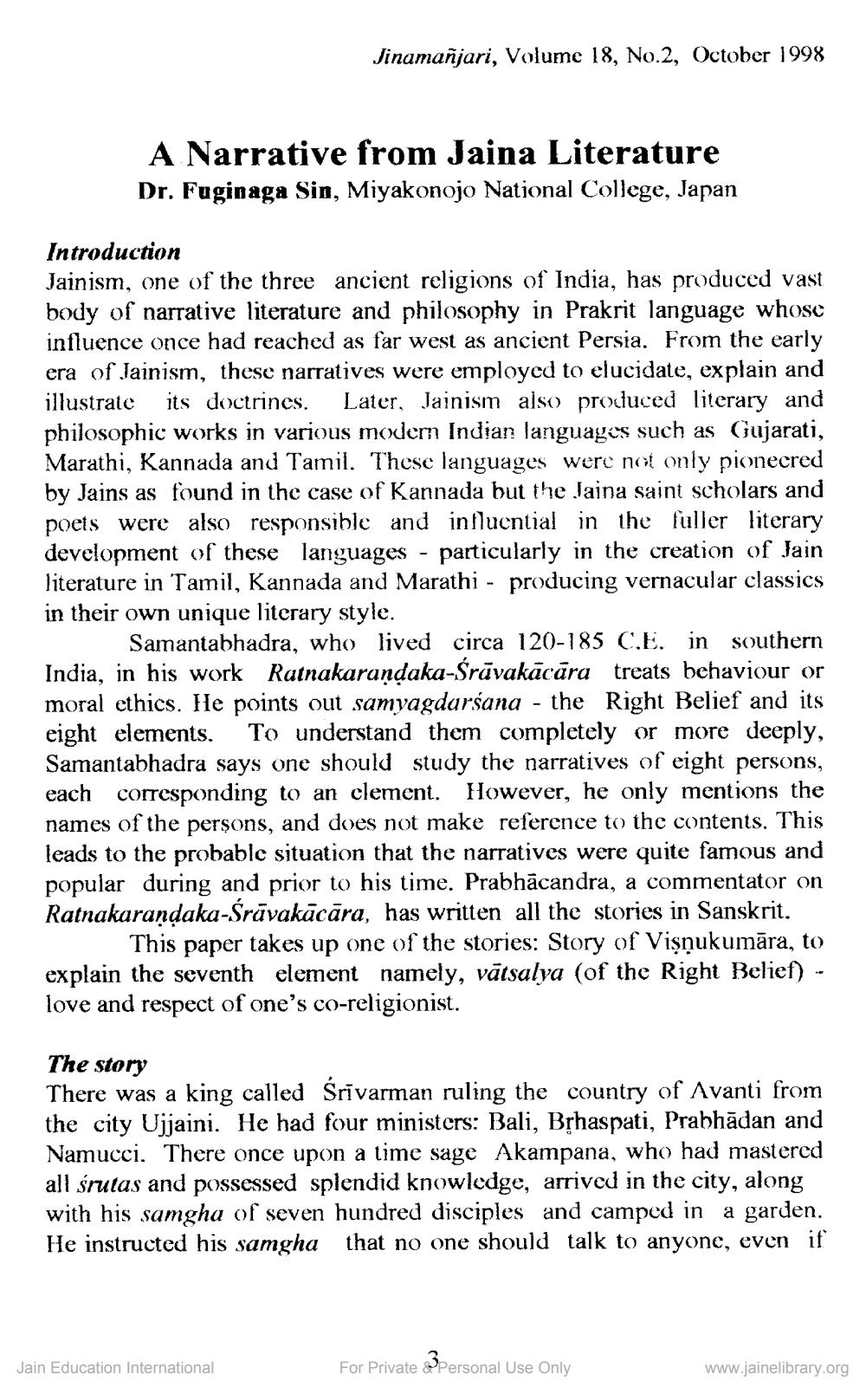Book Title: Jinamanjari 1998 09 No 18 Author(s): Jinamanjari Publisher: Canada Bramhi Jain Society Publication View full book textPage 5
________________ Jinamañjari, Volume 18, No.2, October 1998 A Narrative from Jaina Literature Dr. Fuginaga Sin, Miyakonojo National College, Japan Introduction Jainism, one of the three ancient religions of India, has produced vast body of narrative literature and philosophy in Prakrit language whose influence once had reached as far west as ancient Persia. From the early era of Jainism, these narratives were employed to elucidate, explain and illustrate its doctrines. Later, Jainism also produced literary and philosophic works in various modern Indian languages such as Gujarati, Marathi, Kannada and Tamil. These languages were not only pioneered by Jains as found in the case of Kannada but the Jaina saint scholars and poets were also responsible and influential in the fuller literary development of these languages - particularly in the creation of Jain literature in Tamil, Kannada and Marathi - producing vernacular classics in their own unique literary style. Samantabhadra, who lived circa 120-185 C.E. in southern India, in his work Ratnakarandaka-Srāvakācāra treats behaviour or moral ethics. He points out samyagduršana - the Right Belief and its eight elements. To understand them completely or more deeply, Samantabhadra says one should study the narratives of eight persons, each corresponding to an element. However, he only mentions the names of the persons, and does not make reference to the contents. This leads to the probable situation that the narratives were quite famous and popular during and prior to his time. Prabhācandra, a commentator on Ratnakarandaka-Śrāvakācāra, has written all the stories in Sanskrit. This paper takes up one of the stories: Story of Vişnukumāra, to explain the seventh element namely, vātsalya (of the Right Belief) - love and respect of one's co-religionist. The story There was a king called Srīvarman ruling the country of Avanti from the city Ujjaini. He had four ministers: Bali, Brhaspati, Prabhādan and Namucci. There once upon a time sage Akampana, who had mastered all srutas and possessed splendid knowledge, arrived in the city, along with his samgha of seven hundred disciples and camped in a garden. He instructed his samgha that no one should talk to anyone, even if Jain Education International For Private Personal Use Only www.jainelibrary.orgPage Navigation
1 ... 3 4 5 6 7 8 9 10 11 12 13 14 15 16 17 18 19 20 21 22 23 24 25 26 27 28 29 30 31 32 33 34 35 36 37 38 39 40 41 42 43 44 45 46 47 48 49 50 51 52 ... 76
